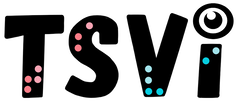- Home
-
Learn
- History of VI >
- Legislation & Laws >
- Vision Professionals >
-
VI Program Resources
>
- Program Printables
- Itinerant Teaching Tips
- Year at a Glance
- VI Program Handbook
- Caseload Analysis
- Organization & Time Management
- Professional Development
- Teacher Standards
- Professional Ethics
- Awards & Recognition
- APH Scholar Program
- Professional Organizations
- Certification Organizations
- Dealing with Challenges
- Professional Publications >
- Relatable Books for All Ages >
- Family Resources >
- Plan
- Basics
-
Teach
- Teaching Strategies >
-
Compensatory Skills Instruction
>
-
Social Skills
>
-
Self Determination
>
- Body Image & Acceptance
- Making Personal Goals
- My Vision Presentation
- My Self-Description
- Create a Personal Data Sheet
- Disclosure Decision
- Disability Statement
- Requesting Help
- Fighting Fears
- My Circle of Support
- Personal Responsibility
- Advocate for Safe Enviroments
- Having Picture Taken
- Coping with Change
- Aging Eyes
- Physical Characteristics
- Political Activism
- Laws Regarding Persons with Disabilities
-
Sensory Efficiency
>
-
Independent Living
>
- Orientation & Mobility Instruction >
- Recreation & Leisure >
-
Career & Vocation
>
-
Grow
- Complete Set Bonus >
-
Recorded Presentations
>
- Webinar: Tips for Being a "Physically Fit" TVI
- Webinar: The Art of Teaching the ECC
- Webinar: Virtual & F2F Strategies
- Webinar: Foundations of Teaching the ECC in the Age of Virtual Instruction
- Webinar: Itinerant Teaching Strategies
- Webinar: Using Themes to Teach the ECC
- Webinar: Conducting a FVLMA
- Webinar: Selecting the Right AT
- Webinar: Developing SMARTER Goals
- Webinar: Determining Service Intensity Using the VISSIT
- Webinar: Activities to Teach the ECC
- Webinar: Accessible Content for BLVI
- Webinar: Accommodations for VI
- Webinar: MIMO Strategies & Activities
- Webinar: SIDPID Strategies & Activities
- Webinar: Standard Course of Study Strategies & Activities
- Webinar: Job Tasks for Job, Career & Life
- Shop
- Jobs
O&M Resource BooksThe following are O&M resource books are specific to working with students who are blind or visually impaired. If there are additional resource books you feel should be listed here, please let me know.
Affiliate Link DisclaimerTeaching Students with Visual Impairments is a participant in the Amazon Services LLC Associates Program, an affiliate advertising program designed to provide a means for sites to earn advertising fees by advertising and linking to amazon. As an affiliate, I earn from qualifying purchases. While I appreciate your support, please compare prices from other retailers that sell these products. Thank you in advance for your support! 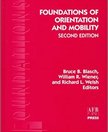
Blasch, Bruce B. Foundations of Orientation and Mobility. American Foundation for the Blind, 3rd edition 2010. Includes current research from a variety of disciplines, an international perspective and expanded contents on low vision, aging, multiple disabilities, accessibility, program design, and adaptive technology. Explores all aspects of O&M learning and instruction.
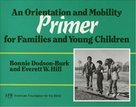
Dobson-Burk, Bonnie. Orientation and Mobility Primer for Families and Young Children. American Foundation for the Blind, 1989. This book describes the skills children with visual impairments need to move safely and efficiently. Includes sensory training, concept development, motor development, and orientation skills. It also includes suggestions for encouraging a child to move, to identify the sources of sounds, to keep track of objects, and to play successfully with others.
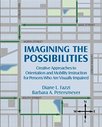
Fazzi, Diane L. Imagining the Possibilities: Creative Approaches to Orientation and Mobility and Mobility Instruction for Persons Who Are Visually Impaired. American Foundation for the Blind, 2001. This book explores methods of teaching O&M to persons who are blind or visually impaired including those with multiple disabilities. Includes materials, samples, and creative teaching strategies.
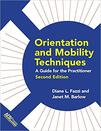
Hill, Everette W. Orientation and Mobility Techniques: A Guide for the Practitioner. American Foundation for the Blind, 1976. This manual covers the definitions, techniques, and devices. It is designed for all professionals concerned with the mobility training process.

Knott, Natalie Isaak. Teaching Orientation and Mobility in the Schools: An Instructor's Companion. American Foundation for the Blind, 2002. This manual is designed to help O&Ms discover the best methods of teaching O&M in schools. Includes useful forms, checklists, and tips on planning schedules, organizing equipment and work routines, working with school personnel and educational team members and effectively provide instruction to children with diverse needs.
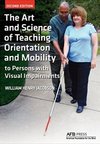
Jacobson, William H. Art and Science of Teaching Orientation and Mobility to Persons with Visual Impairments. American Foundation for the Blind, 2nd edition 2012. This book provides a comprehensive description of the techniques of teaching orientation and mobility. Considerations and strategies for meeting individual needs, environmental features, and ethical issues.

LaPrelle, Lorie Lynn. Standing On My Own Two Feet. Blind Children's Center, 2002. This booklet provides a step-by-step guide to designing and constructing simple, individually tailored adaptive mobility devices made from low-cost PVC materials. These devices are intended to enable preschool age children who are blind to begin to master independent travel.
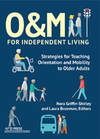
Page, et. al. O&M for Independent Living: Strategies for Teaching Orientation & Mobility to Older Adults. American Foundation for the Blind, 2016. This book is a guide for orientation and mobility instructions, rehabilitation specialists, occupational therapists, and other professionals who work with adults who may be new to vision loss. It provides insights essential for helping these individuals remain independent and self-reliant. In addition to information on the effects of aging and considerations for assessment and instruction, chapters include strategies on adapting O&M skills for older adults, environmental modifications and appropriate equipment, exercise and its relationship to mobility, daily living skills, and effective collaboration among the professionals who serve this population.
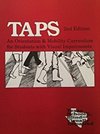
Pogrund, Rona, et al. An Orientation & Mobility Curriculum for Students with Visual Impairments, 3rd Edition. TSBVI, 2012. For orientation and mobility specialists who serve students ages 3 to 21 who may also have other impairments. This curriculum includes goals, objectives, and teaching strategies as well as functional mobility tasks, for the following environments home/living, campus, residential, commercial and public transportation, as well as an ambulatory devices section. The four-part set also includes extensive appendices containing a wide range of O&M related topics and a supplement that details street crossing strategies.
|
History of Visual Impairments
Professional Practice
Vision Professionals
Professionalism
Teacher Resources
Professional Publications
VI Book Resources
|
|
Teaching Students with Visual Impairments LLC
All Rights Reserved |
- Home
-
Learn
- History of VI >
- Legislation & Laws >
- Vision Professionals >
-
VI Program Resources
>
- Program Printables
- Itinerant Teaching Tips
- Year at a Glance
- VI Program Handbook
- Caseload Analysis
- Organization & Time Management
- Professional Development
- Teacher Standards
- Professional Ethics
- Awards & Recognition
- APH Scholar Program
- Professional Organizations
- Certification Organizations
- Dealing with Challenges
- Professional Publications >
- Relatable Books for All Ages >
- Family Resources >
- Plan
- Basics
-
Teach
- Teaching Strategies >
-
Compensatory Skills Instruction
>
-
Social Skills
>
-
Self Determination
>
- Body Image & Acceptance
- Making Personal Goals
- My Vision Presentation
- My Self-Description
- Create a Personal Data Sheet
- Disclosure Decision
- Disability Statement
- Requesting Help
- Fighting Fears
- My Circle of Support
- Personal Responsibility
- Advocate for Safe Enviroments
- Having Picture Taken
- Coping with Change
- Aging Eyes
- Physical Characteristics
- Political Activism
- Laws Regarding Persons with Disabilities
-
Sensory Efficiency
>
-
Independent Living
>
- Orientation & Mobility Instruction >
- Recreation & Leisure >
-
Career & Vocation
>
-
Grow
- Complete Set Bonus >
-
Recorded Presentations
>
- Webinar: Tips for Being a "Physically Fit" TVI
- Webinar: The Art of Teaching the ECC
- Webinar: Virtual & F2F Strategies
- Webinar: Foundations of Teaching the ECC in the Age of Virtual Instruction
- Webinar: Itinerant Teaching Strategies
- Webinar: Using Themes to Teach the ECC
- Webinar: Conducting a FVLMA
- Webinar: Selecting the Right AT
- Webinar: Developing SMARTER Goals
- Webinar: Determining Service Intensity Using the VISSIT
- Webinar: Activities to Teach the ECC
- Webinar: Accessible Content for BLVI
- Webinar: Accommodations for VI
- Webinar: MIMO Strategies & Activities
- Webinar: SIDPID Strategies & Activities
- Webinar: Standard Course of Study Strategies & Activities
- Webinar: Job Tasks for Job, Career & Life
- Shop
- Jobs
